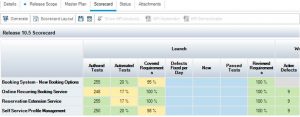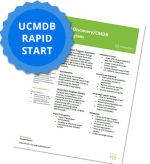ALM Project Planning and Tracking: The Key to Improved Metrics
By: Matt Angerer
We often hear a common question: how can we effectively monitor application delivery progress relative to the overall plan? Sounds like a simple question with a simple answer, right? Most project management professionals would indeed agree that monitoring scope and tracking milestones is project management 101. What these managers don’t realize is that they’re sitting on a powerful arsenal of features within HPE Application Lifecycle Management (ALM) that can aid them in doing just that. It’s raw data turned into actionable intelligence – giving your Project Managers, Release Managers, and QA leads a real-time window into project activities.
HPE’s ALM Project Planning and Tracking (PPT) feature from the release module is the solution you’ve been looking for. This feature makes it easy for users and managers to monitor the progress of an application in relation to specific milestones. Following the identification and development of all of the necessary components, ALM produces a scorecard. This scorecard acts as a comprehensive grid detailing all of the milestones, as well as the specific goals to be met within each category.

When creating milestones, it is crucial to keep in mind that they need to be precise, substantial, and measurable. This ensures that the stakeholders who are interpreting these milestones will find them both well-defined and significant. ALM project tracking will automatically ascertain whether the milestone was reached on time, and the QA Lead or Release Manager is then responsible for communicating that information to the relevant stakeholders. It’s also important to consider how many milestones you’ll be making. As a general rule of thumb, it’s better to have a larger number of milestones with less content than to have fewer milestones with more content. Milestones that are too time consuming may cause too much pressure amongst team members or lead to procrastination, both of which are detrimental to overall progress. These shorter milestones equate to shorter sprint cycles with less functionality – creating a sense of gratification and progress amongst the team.
Once you create a milestone in PPT, you’ll need to name all of the scope item tasks, and then assign content to them. All scope items must include clearly defined development and testing requirements, as well as tests that clearly establish and check all criteria necessary to meet the milestone.
Start Measuring with Key Performance Indicators (KPIs)
Next, you’ll need to assign Key Point Indicators (KPIs) to all scope items. ALM comes with a variety of default KPIs. Some of these include Severe Defects, Passed Tests, and Automated Tests. Check out our popular blog article on KPIs to learn about the importance of these indicators when designing your QA organization. You also have the option of adding custom KPIs using ALM project customization. Need help setting this up? Contact us today for a FREE 1 hour workshop on creating custom ALM KPIs. Your KPIs assigned to each scope item have thresholds with corresponding colors to denote progress. GREEN indicates an OK range, YELLOW indicates a Warning range, and RED indicates a Fail range.
After the milestones have corresponding scope items with content and KPIs, a Project Manager can look at the scorecard in the Release module. Your Project Managers, Release Managers, and Executives will then have real-time visibility into every aspect of the project. Now you’ll never have to reply to emails asking the same question from 4 different bosses (how’s the TPS Report coming along Peter?)!
Subscribe for the latest RP Blog Updates:









